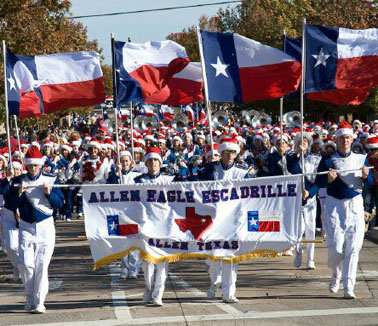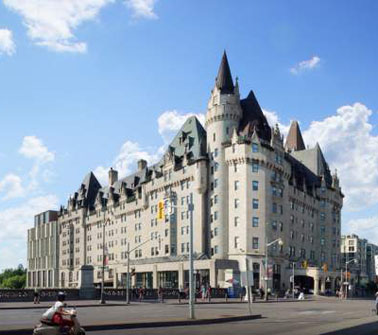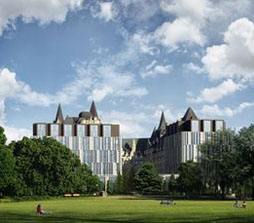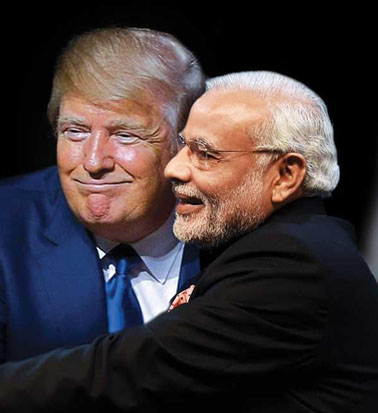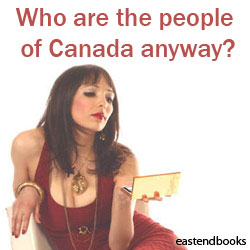Looking back on the first quarter of the fateful year 2016
Dec 14th, 2016 | By Counterweights Editors | Category: In Brief
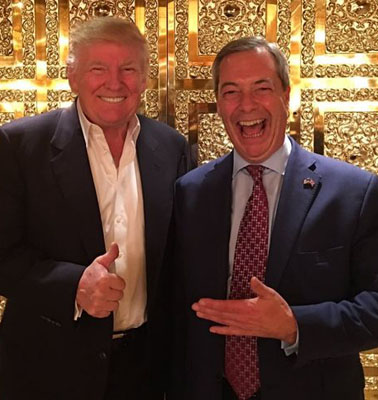
Donald Trump and UK Brexit and interim Ukip leader Nigel Farage “the first foreign politician to meet the newly-elected Mr Trump” after November 8, in front of the gold doors at Trump Tower in New York.
The short story about 2016 in the English-speaking global village is just Brexit in the UK and Donald Trump in the USA.
And, perhaps more presciently than we in North America typically allow, this all happened on the heels of the right-wing victory of Narendra Modi and the  Bharatiya Janata Party (or Indian People’s Party), in the world’s most populous democracy of the Republic of India in 2014.
(For the latest updates here see “PM Narendra Modi behaving like ‘king’” and “12 people arrested in India for not standing during national anthem.”)
A quick journey through our counterweights archives for the first quarter of 2016 raises other more forgotten but still intriguing features of the year now lurching to a troubled end.
See, eg, “Canadian dollar will drop to 59 cents US in 2016, Macquarie forecasts.”  As we write in the middle of December 2016 the Canadian dollar is at 76 cents US – still not where some of us would  like, but some six US cents higher than it was in the middle of this past January.
On counterweights 2016 began with “What can the Rose Parade tell us about where America is going in 2016?”
With the November 8 presidential election now behind us, it could be said that the winner was represented by the Allen Eagle Escadrille from the suburbs of Dallas, Texas – biggest band in America with 782 members. It  took eight planes to fly them to the Rose Parade in Los Angeles. If Donald Trump were going to design a marching band this would probably be it.
Our current favourite counterweights piece from January 2016 tried to deal with theoretically more manageable issues. See “Is Ottawa still ‘the last lumber village before the North Pole’.. and what should be done about it for 2017?”
This piece focused on an argument in the press of the day about the need to inject some enhanced architectural and land-use planning panache of the 21st century into Canada’s federal capital city. (As in “Why is our … capital so drab?” and “Ottawa is the worst capital city in the G7.”)
The Chateau Laurier addition controversy of 2016
The essential unwillingness of many interested Canadians to come to serious grips with their capital city’s urban design challenges (shall we say?) was subsequently illustrated by a profoundly retrogressive attack on a contemporary design for an addition to Ottawa’s Chateau Laurier hotel, presided over by Peter Clewes.
Mr. Clewes is a Montreal-born-and-raised graduate of the University of Waterloo, who is now “principal of the Toronto-based firm architectsAlliance. He has been one of the leading architects in the condo boom that has reshaped Toronto in the first decade of the 21st century.”
He has designed admired interesting buildings and won acclaim. He believes : “Architecture is a record of where a city and a culture was at a particular time.”
His firm’s proposed addition to the Chateau Laurier makes a dignified bow to the original from just before the First World War (“in the French Gothic Châteauesque style to complement the adjacent Parliament buildings”). It then goes on to update the concept for this particular time in the city and culture of Ottawa – and the larger confederation of which it is the capital city. (Which will be celebrating its 150th anniversary in 2017.)
Reading through just the online critics of the original proposed Chateau design from Peter Clewes and architectsAlliance, you have the feeling that the only addition to the Chateau possible in their view would be one which essentially replicates the original design from more than 100 years ago. To Peter Clewes (and we certainly agree) this ties us all too literally and unimaginatively to the past that weighs like a nightmare on the brains of the living.
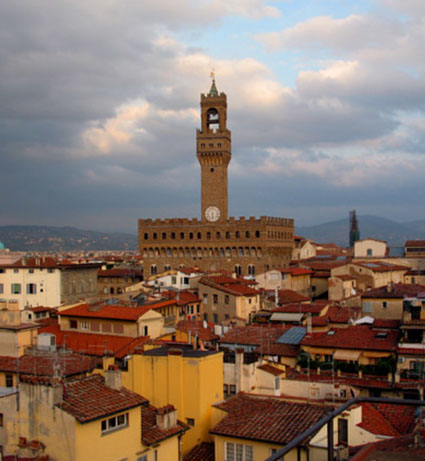
Florence, Italy today, with the Palazzo Vecchio (or town hall) in the distance – where the controversial inventor of modern political science Niccolo Machiavelli worked, in the late 15th and early 16th centuries.
Now, if you’re talking about a place like downtown Florence in north central Italy, where urban life in the 15th and 16th centuries still beguiles the modern city, extreme “contextualism” might make more sense.
But not in Canada today, and certainly not in Ottawa, with we’d agree the great exception of the Parliament Buildings themselves.
If you want to dig a little deeper yourself, see : “New Château Laurier expansion design incites fury online” (September 15, 2016) ; “Historical ‘distinctions’: Architect defends controversial Chateau Laurier expansion plan” (September 16) ; “Don’t let the Chateau Laurier be defaced: Editorial” (September 23, and in the Toronto Star of all places) ; and “Château Laurier revised additions ‘inappropriate’ and ‘incongruous’: Heritage Ottawa” (November 28).
Already in February Donald Trump had reared his crazy haircut
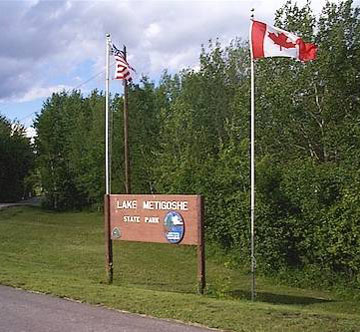
Lake Metigoshe State Park in North Dakota abuts the Canada-US border in Manitoba. A wall here would have to pass through a number of lakes, including Ross Lake and Lake Metigoshe itself! (And then there’s the Great Lakes in Ontario too.)
Which just leaves time for our counterweights editors’ current counterweights favourites for February and March 2016 – both of which finally focus on the potential new king of America (and who’d have ever thought the American people would stand for one!)
For February our nod goes to “Maybe Canada should build a wall along the border against Donald Trump ????” by the excellent Citizen X.
For March we have chosen our own “Donald Trump and the Rob Ford funeral in Toronto.” (And certainly former Toronto mayor Rob Ford’s death from a rare, soft-tissue cancer on March 22, at the far too early age of 46, was a key event of the first quarter of 2016 here in the capital city of Canada’s most populous province of Ontario.)
Finally, back in the present, if you absolutely must have something more on Donald Trump right now, the best thing we’ve seen lately is “The Real Trump” by Mark Danner in the December 22, 2016 New York Review of Books.
Note, esp : “Donald Trump is not an ideologue. Donald Trump is a promoter: he promotes resentment and he promotes fantasy. ‘I play to people’s fantasies,’ he wrote in his most famous book … ‘People may not always think big themselves, but they can still get very excited by those who do. That’s why a little hyperbole never hurts. People want to believe that something is the biggest and the greatest and the most spectacular … I call it truthful hyperbole. It’s an innocent form of exaggeration – and a very effective form of promotion.’”
Well … yes … but innocent? As a style for the president of the USA? As a recipe for national, continental, and global confusion and instability?
All we know is that we did manage to live through Rob Ford here in Toronto (although his brother Doug and young nephew Mike are still  involved in local politics).
As the still more fateful year of 2017 draws nearer we can only hope that the USA today next door (old home of Democracy in America etc) somehow manages to live through Donald Trump, more or less intact.
